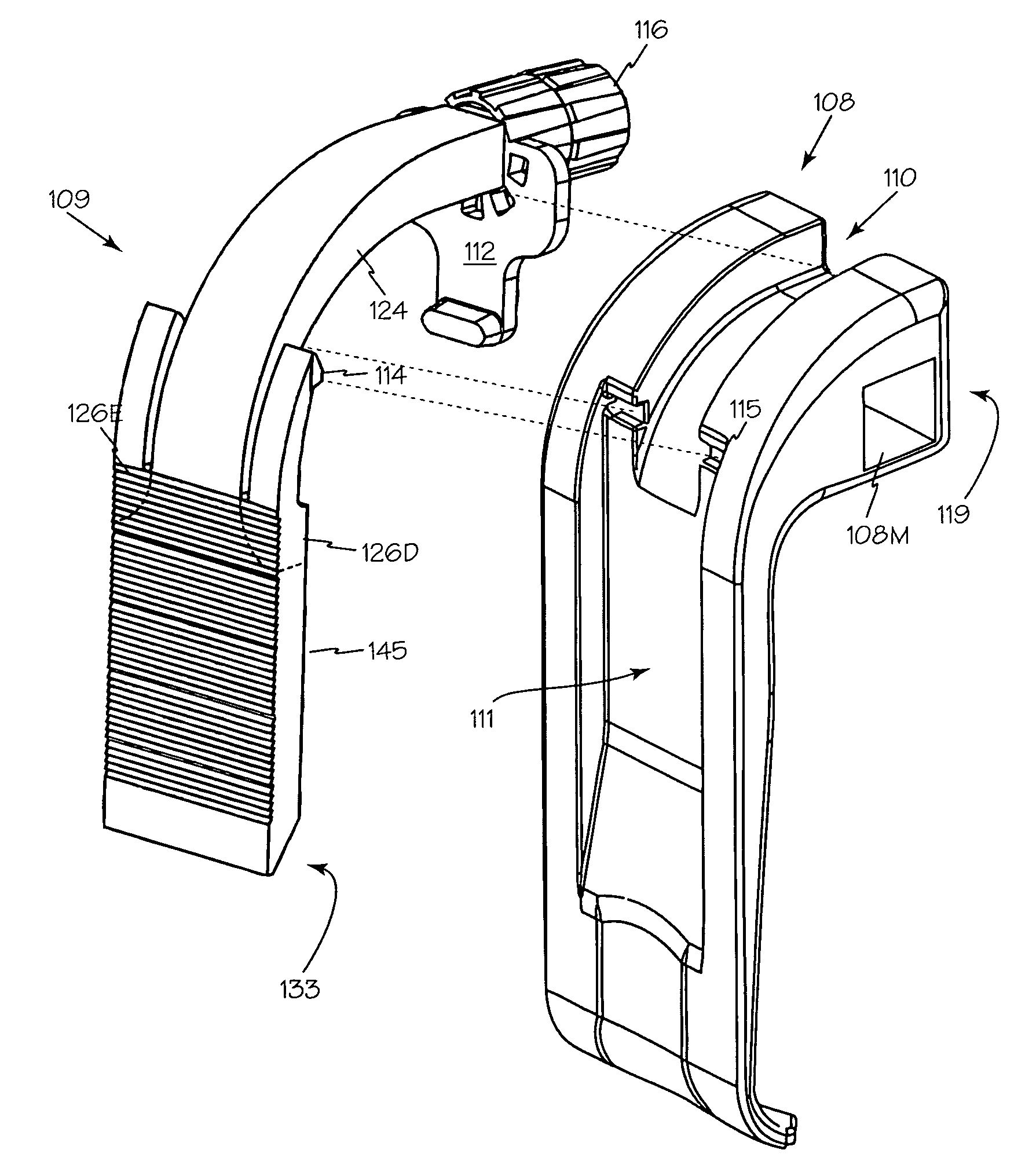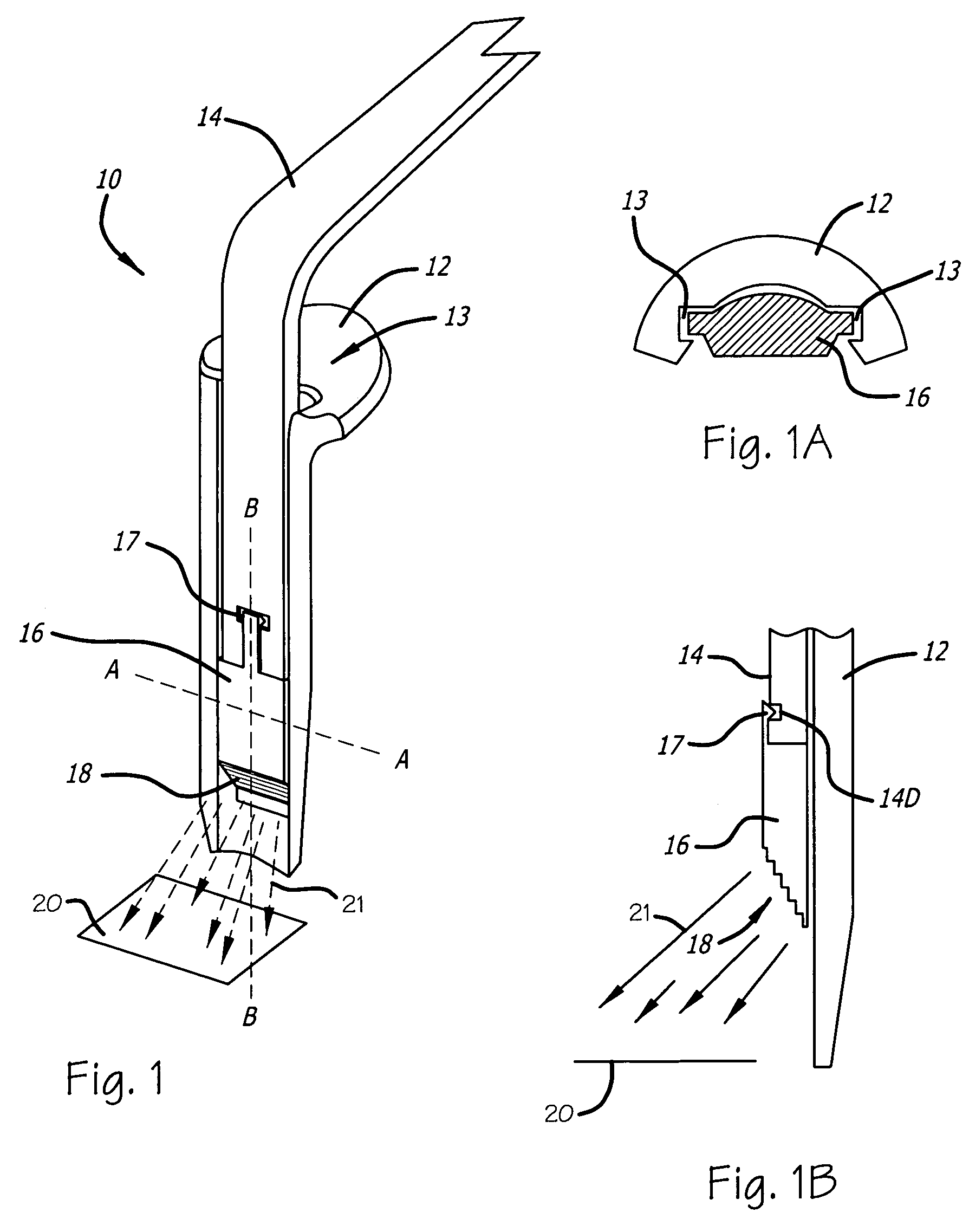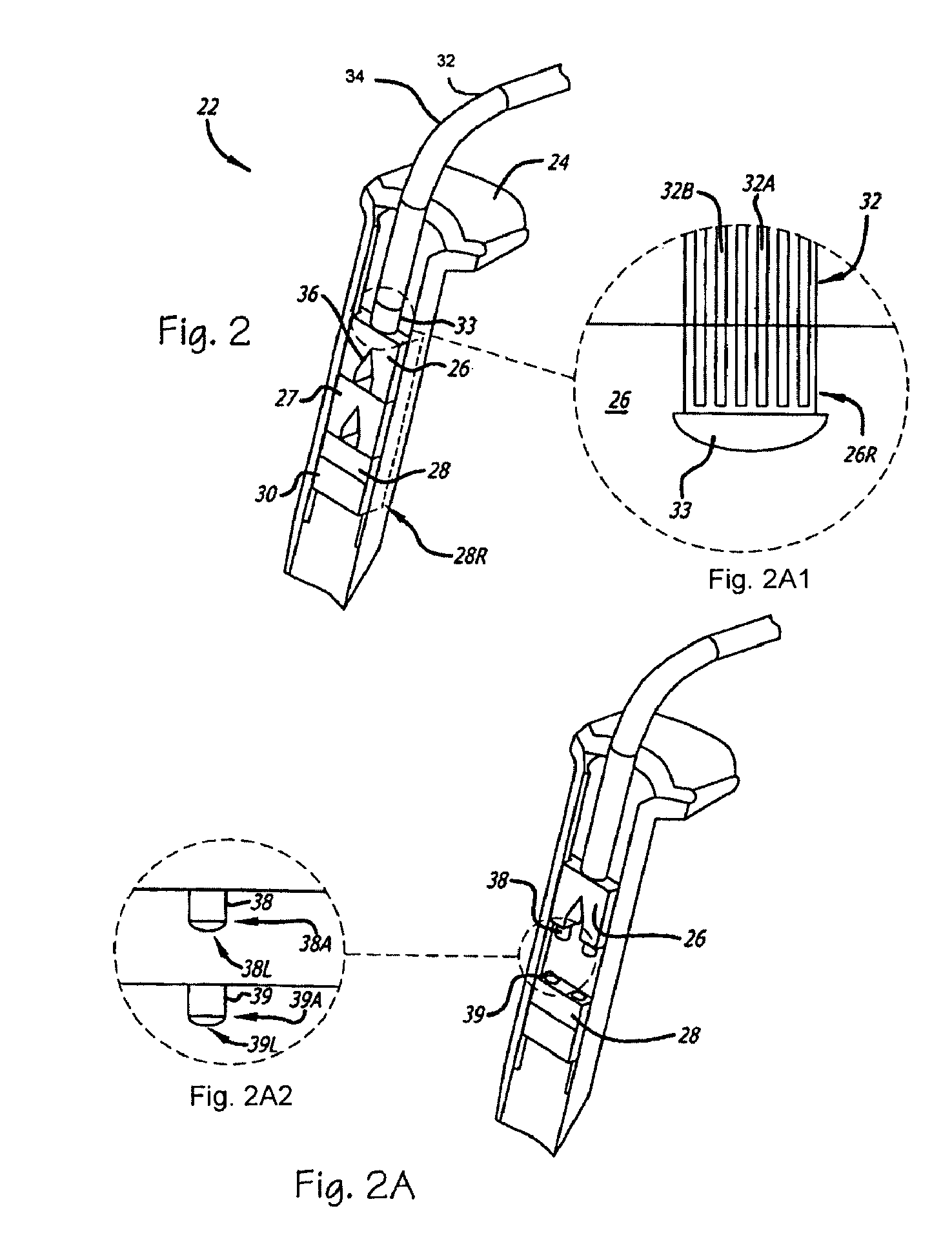Cyclo olefin polymer and copolymer medical devices
a technology of cyclo olefin and medical devices, applied in the field of in vivo surgical field illumination, can solve the problems of unstable transmission characteristics, heat and weight penalty of light sources, and limited use of body cavities for diagnosis and or therapy
- Summary
- Abstract
- Description
- Claims
- Application Information
AI Technical Summary
Benefits of technology
Problems solved by technology
Method used
Image
Examples
Embodiment Construction
[0070]Retractor illumination system 10 of FIG. 1 includes blade retractor 12 including channel 13 to engage a fiber optic input 14 and waveguide illuminator 16. Latch 17 serves to mechanically attach waveguide illuminator 16 to fiber optic input 14 so that the resulting assembly may be moved up and down in channel 13 to any position suitable for illumination. The optical coupling between fiber input 14 and waveguide illuminator 16 is a simple face-to-face coupling, which may be enhanced by use of an index matching gel, or other similar material, applied to either the fiber input 14 or the waveguide illuminator 16 or both. Light entering waveguide illuminator 16 is contained within the waveguide with minimal light loss until it reaches output optical structures such as output structures 18, where light exits to illuminate the predetermined illumination area 20. Output optical structures 18 may include one or more stair stepped facets or lenses that may include a radius or angled face...
PUM
| Property | Measurement | Unit |
|---|---|---|
| diameter | aaaaa | aaaaa |
| diameter | aaaaa | aaaaa |
| diameter | aaaaa | aaaaa |
Abstract
Description
Claims
Application Information
 Login to View More
Login to View More - R&D
- Intellectual Property
- Life Sciences
- Materials
- Tech Scout
- Unparalleled Data Quality
- Higher Quality Content
- 60% Fewer Hallucinations
Browse by: Latest US Patents, China's latest patents, Technical Efficacy Thesaurus, Application Domain, Technology Topic, Popular Technical Reports.
© 2025 PatSnap. All rights reserved.Legal|Privacy policy|Modern Slavery Act Transparency Statement|Sitemap|About US| Contact US: help@patsnap.com



